
May Zaw Khin shared Burma-Newselite's photo.
အာဖဂန္နစ္တန္က
ႏွစ္ေပါင္း ၂ ေထာင္သက္တန္းရွိျပီျဖစ္တဲ့ ေရွးေဟာင္း ဗုဒၶရုပ္ပြားေတာ္နဲ႔
ဗုဒၶ သာသနိက အေဆာက္အဦေတြကုိ တရုတ္ သတၱဳတြင္းကုမၸဏီေတြ ဖ်က္ဆီးေနသလား။
အေမရိကန္ႏုိင္ငံ Northwest University စာနယ္ဇင္းပညာဌာနက လက္ေထာက္
ပါေမာကၡလည္းျဖစ္၊ မွတ္တမ္းရုပ္ရွင္ ရုိက္ကူးသူလည္းျဖစ္တဲ့ ဘရန္႔ ဟူ႔ဖ္မန္
(Brent Huffman) ဟာ လက္ရွိ အာဖဂန္ႏုိင္ငံ မက္စ္အုိင္နခ္ မွာရွိတဲ့
တရုတ္အစုိးရပုိင္ ေၾကးနီသတၱဳတြင္းအေၾကာင္း မွတ္တမ္းရုပ္ရွင္ ရုိက္ကူးေရး
လုပ္ေဆာင္ေနပါတယ္။
တန္ဖုိးအားျဖင့္ အေမရိကန္ေဒၚလာ တစ္ထရီလီယံ
($1 trillion) ေလာက္ အက်ဳိးအျမတ္ရႏုိင္မယ့္ ဒီ ေၾကးနီသတၱဳတြင္းမွာ
ႏွစ္ေပါင္း ၂၀၀၀ ရွိျပီ ျဖစ္တဲ့ ေရွးေဟာင္း ဗုဒၵဘာသာ အေဆာက္အဦးေတြကုိ
ေတြ႔ရွိခဲ့ပါတယ္။
ဗုဒၵရုပ္ပြားေတာ္ ၂၀၀ ေက်ာ္နဲ႔ ေစတီ၊ ဘုန္းၾကီးေက်ာင္းေတြ ပါရွိပါတယ္။
ဒီေရွးေဟာင္း ဗုဒၶဘာသာ သာသနိက အေဆာက္အဦေတြရဲ႕ ကံၾကမၼာ ဘယ္လုိ ျဖစ္လာႏုိင္ပါသလဲ။
ဘရန္႔ဟူ႔ဖ္မန္ ရဲ႕ မူရင္း အဂၤလိပ္ဘာသာ ေဆာင္းပါးကုိ ဆက္ဖတ္ႏုိင္ေအာင္ တင္ေပးလုိက္ပါတယ္။
ေနာက္ရက္ေတြမွာ အခ်ိန္ရရင္ အျပည့္အစုံ ဘာသာျပန္ေပးပါမယ္။
Are Chinese Miners Destroying a 2,000-Year-Old Buddhist Site in Afghanistan?
A gold-plated seated Buddha overlooks the China Metallurgical Group Corporation mine. (Brent Huffman)
Brent Huffman, a documentary filmmaker and assistant professor at the
Medill School of Journalism at Northwestern University, is currently
working on a film about a Chinese state-owned copper mine in Mes Aynak,
Afghanistan. The mining operation, which Huffman says is a precursor to
potentially $1 trillion worth of extraction potential in the country,
uncovered a 2,000 year-old religious site with over 200 Buddha statues,
devotional temples called stupas, and a monastery complex.
In
the following account, Huffman gives an update about the historical site
under threat in Mes Aynak, as well as the dangerous environment the
mine has created for archaeologists, Chinese workers, and local Afghans.
The piece adds to Asia Society Blog's ongoing coverage of the site.
The Buddhists that picked the location of a religious center in Mes
Aynak, Afghanistan, some 2,000 years ago did so in part to make
ornaments and coins from the copper at the site. Today, a Chinese mining
company may destroy what they left behind to extract that same
resource.
That is, unless a team of Afghan archaeologists led
by Philippe Marquis, director at the French Archaeological Delegation in
Afghanistan (DAFA), can put a stop to it. While making a documentary
film about the mining project from July 2011 to April 2012, I filmed
Marquis and his team frantically searching for artifacts and others
attempting rescue preservation with limited equipment like cloth wraps
and plastic tarps.
“We have only discovered the tip of the
iceberg, a mere 10 percent of the site,” said Marquis, who believes this
could easily be a 10-year excavation project.
Efforts to save
and preserve the massive site have been drastically scaled back to a
project whose best hope is to merely document the site before the China
Metallurgical Group Corporation (MCC) begins copper excavation in 2014.
The remaining cultural relics and immense structures, which are both too
large and fragile to be moved, will all be destroyed.
MCC, for
its part, said it did not know the archaeological site existed when
they took on the project, and that the site will not stand in the way of
the excavation of copper valued at over 100 billion dollars.
“We believe it will not take long for the problem to be solved,”
Executive Deputy President Zhenguo Liu told me in an interview.
Meanwhile, the archaeologists fear for the future of the site. Lead
Afghan archaeologist Abdul Qadeer Temore has been tirelessly working at
the excavation site for nearly a year. He told me last July he hadn’t
received any pay for the past four months from the Afghan government
while struggling to feed his three young children.
“I feel like
a mother and the artifacts feel like my children,” Temore said. “We
work so hard uncovering the pieces and protecting them. When they get
destroyed, it will feel like losing a child.”
To make matters
worse, the Mes Aynak site is located in the heart of Taliban country.
Abdul gets regular death threats from the Taliban on his cell phone
demanding cash for his life. Early this year, two Afghan workers were
severely wounded when they dug up a land mine buried at the archaeology
site. One worker lost his eyes and another lost his legs in the blast.
Abdul stressed to me that despite the extreme risk, he and his team of
Afghan specialists would keep excavating on the site until they are
forced to quit.
The Chinese workers are also in constant
danger. In 2011, an SUV full of MCC workers hit a land mine on one of
the winding gravel roads, killing all passengers in the vehicle. The
compound itself is often a target for rockets fired from the surrounding
mountains. As a result, the Chinese MCC compound looks like a military
fortress complete with bomb-resistant barricades filled with sand
outlining the area, numerous outposts where armed guards keep watch, and
concrete walls topped with razor wire around the compound itself.
Six Afghan villages in Logar province, most with a 500-year history,
have to be relocated because of the pending excavation at the copper
mine. Many of these villages have already been leveled and residents
have been forced to move into other areas. Due to poor negotiations with
rural Afghan elders, many of the former inhabitants of the now
destroyed communities feel angry and disenfranchised by MCC and the
Afghan government.
“We are helpless,” said Akbar Khan from the
nearby village of Adam Kaley. “We do not have the means to fight for
our rights. When people ask for their rights the government comes to
coerce them, beat them, humiliate them and take their property. We are
forced to fight the state with violence.”
Khan and other
villagers had signed petitions from the Afghan government promising them
compensation for the destruction of their villages and livelihood, but
so far the men say they have not been adequately reimbursed.
“These villages were everything to us,” said Abdul Raham, a village
elder from Bar Chinaria. “Our families have lived off this land for
hundreds of years and now we are begging in the streets.”
As
archaeologists scramble to save what they can from the site before the
2014 deadline, it has become clear to me that another cultural wonder in
Asia will be lost to a future focused on resource extraction,
ultimately benefiting countries like China over the citizens of
Afghanistan.
Huffman will be attending a conference in
Washington, D.C., June 4-5 hosted by the Alliance for the Restoration of
Cultural Heritage about solutions to save Mes Aynak.
(ဓာတ္ပုံ- Brent Huffman)





















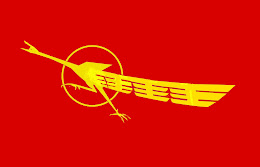





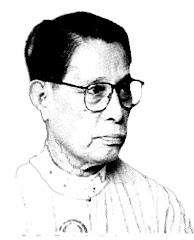









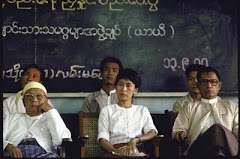

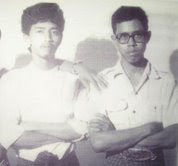

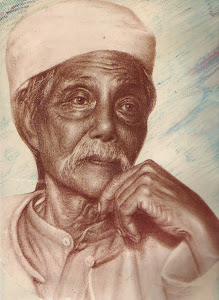
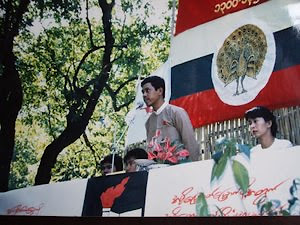
No comments :
Post a Comment